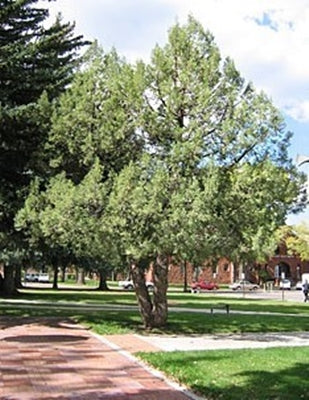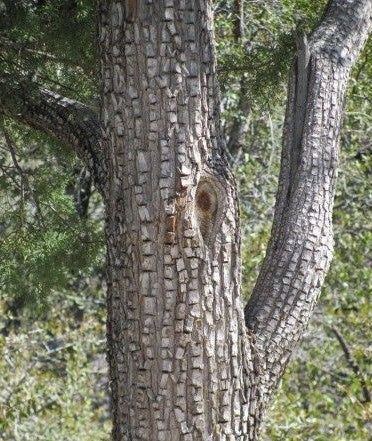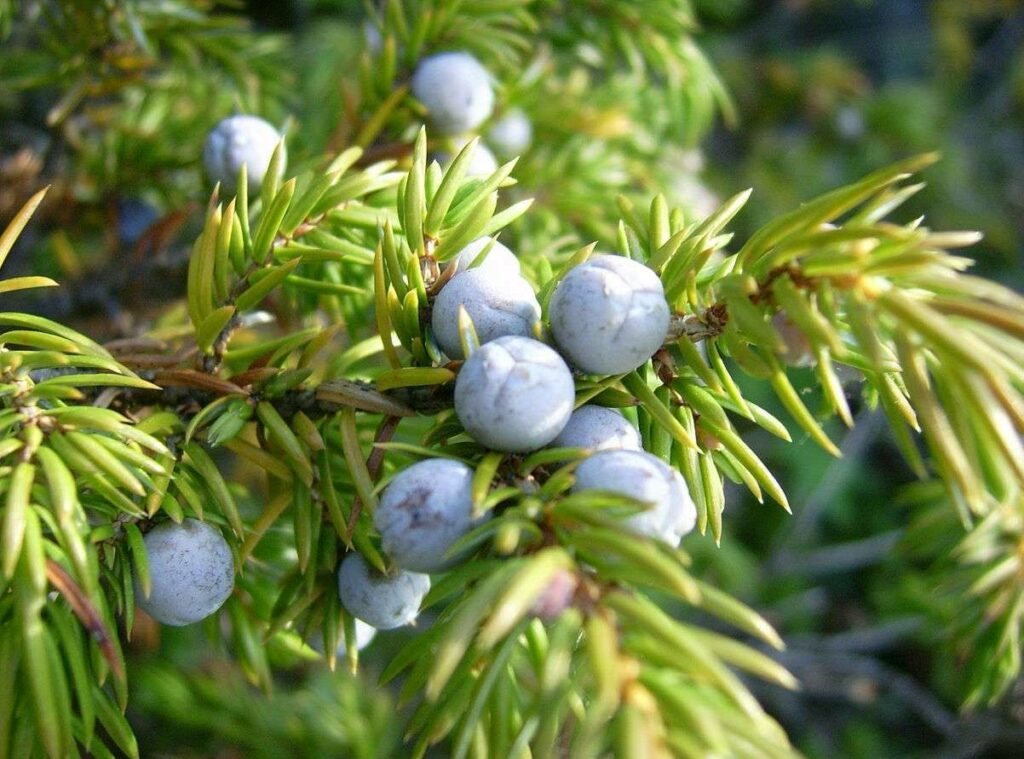by Ken Lain, the mountain gardener

Native to Arizona, the Alligator Juniper, Juniperus deppeana, is characterized by unique cracked bark that resembles alligator skin. Alligator and its native cousin, the Shaggy Bark Juniper, are the largest species of their kind growing 40-50′ feet tall at maturity.
Alligator junipers are an essential element for native birds, deer, javelina, and smaller mammals. The large edible berries are enjoyed by many different birds, mammals, even be eaten by humans.
Botanical Name Juniperus deppeana
Common Name Alligator juniper, checkerboard juniper, western juniper
Plant Type Evergreen tree
Mature Size 40-50′ tall
Sun Exposure 6+ hours of Full sun
Soil Type Dry, well-draining
Soil pH 5.5 – 7.0
Bloom Time Winter
Flower Color Seed berries
Hardiness Zones 6-9
Native Area Southwest United States

How to Plant and Grow Alligator Juniper
Alligator Juniper has the same cultural needs as most other juniper species. In their native environment, alligator junipers grow on open, rocky hills and slopes that receive full sun for most of the day. Container-grown or ball-and-burlap trees should be planted in a large, carefully prepared hole and backfilled with soil amended with Watters Premium Mulch or another acidifying organic material.
Light
True to its native habitat, the alligator juniper is a sun-loving tree needing full sun to thrive. Alligator junipers cannot grow in the shade, and growth may be stunted in areas that only receive partial sun.
Soil
Alligator junipers thrive in sandy, well-draining soil that is slightly acidic with a pH between 5.5 – 7.5. However, they are adaptable to a wide variety of soil conditions, as long as the medium is well-draining.
Water
Alligator junipers are drought-tolerant trees with low water needs. An established alligator juniper should not need supplemental watering. Seedlings and young trees do require watering during dry periods. This Arizona native is susceptible to overwatering. Ensuring your tree is planted in well-draining soil to prevent root rot.
Temperature and Humidity
Alligator juniper tolerates temperatures as low as zero degrees through winter dormancy. These junipers grow best in USDA zones 6 to 9.
Fertilizer
Feed with Watters 7-4-4 All Purpose Food 3 times per year (March, July, and October) for best blooms and dense foliage that screens and cuts the wind.

![]() Growing from Seed
Growing from Seed
While alligator junipers can be propagated in other ways, they are most easily grown from seed. Alligator juniper seeds can be sown directly into the garden in the fall. Germination rates are notoriously low, so it’s essential to plant a large number of seeds at one time to ensure some success.
Alligator juniper seeds can be purchased online or in-store. They can be collected directly from a mature tree in the late summer or early fall once the seeds have ripened. If you are not sowing the seeds outdoors immediately, the seeds should be thoroughly air-dried and cleaned to ensure against mold. Before planting, cold-stratified your seed in the refrigerator for 30 days at 20-40 degrees Fahrenheit. It is best to plant your seed directly into the landscape in the fall.
Common Pests/Diseases
Common juniper diseases include twig and tip blight, as well as cedar rusts. Fungicides can help proactively protect alligator junipers against such conditions, but they should be applied before an infection is present. Prompt pruning of any dead or diseased branches should keep these common diseases under control.
Common pests of the alligator juniper include bagworm, spider mites, and juniper scale. Insecticides are an effective way to control infestations.

